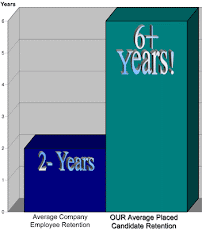Thursday
The Art of Finding New Customers
The best way to make sure your company flourishes and grows is to consistently find new customers. New customers often result in quickly realized revenue with a low acquisition cost and high margins. Here are five proven techniques for finding new customers.
1. Existing customers: How many additional divisions, sister organizations, other plants does your current customer have that you’re not doing business with? They know you, they trust you, you already are approved as a supplier – why not get all the business instead of the small amount you currently have? Also, who do they know that they could refer you to – either inside their company or in their business or social circle?
2. Past customers: Go back to past customers to see if their needs or people have changed. Also, try selling to the company’s additional divisions, sister organizations, and other plants. As you speak with people, ask who they know that they could refer you to, either inside their company or in their business or social circle?
3. Vertical markets: Much of what you do and who you work with is transferrable to other potential clients in similar sectors. For example, if you work with electrical contractors, you may want to look at plumbing, landscape, and roofing contractors. They are in the vertical market of construction contractors.
4. Trade groups and associations: If you are already part of a trade organization, consider reaching out to fellow members. They might make good clients or referral sources. Work together with other members to get business that will benefit both of you. Also, don’t overlook the organization itself–they may need or have use for what you do now more than ever!
5. Non-profits and civic groups: Many non-profits are hurting for revenue but they still have business needs. While you may not be able to charge full price, you might be able to secure work with a non-profit and then use publicity to leverage that work into name recognition or other jobs. Recently, a Tennessee non-profit needed a new office. A local builder took the job and while he didn’t make much money, it enabled him to keep his crews working and cash flowing. The builder got good publicity in the news media for the job. From this, the builder picked up two jobs which more than paid for the short profits on the non-profit job.
While there is no magic solution for gaining new customers, some hard work put into these five areas will keep you growing and moving forward.
-Tim Shaver is owner of Tim Shaver and Associates – a business consulting, coaching and training company. Tim Shaver and Associates is an authorized franchisee of Sandler Training. Tim can be reached at 615-399-8700 or tim@nashvillesalestraining.com
1. Existing customers: How many additional divisions, sister organizations, other plants does your current customer have that you’re not doing business with? They know you, they trust you, you already are approved as a supplier – why not get all the business instead of the small amount you currently have? Also, who do they know that they could refer you to – either inside their company or in their business or social circle?
2. Past customers: Go back to past customers to see if their needs or people have changed. Also, try selling to the company’s additional divisions, sister organizations, and other plants. As you speak with people, ask who they know that they could refer you to, either inside their company or in their business or social circle?
3. Vertical markets: Much of what you do and who you work with is transferrable to other potential clients in similar sectors. For example, if you work with electrical contractors, you may want to look at plumbing, landscape, and roofing contractors. They are in the vertical market of construction contractors.
4. Trade groups and associations: If you are already part of a trade organization, consider reaching out to fellow members. They might make good clients or referral sources. Work together with other members to get business that will benefit both of you. Also, don’t overlook the organization itself–they may need or have use for what you do now more than ever!
5. Non-profits and civic groups: Many non-profits are hurting for revenue but they still have business needs. While you may not be able to charge full price, you might be able to secure work with a non-profit and then use publicity to leverage that work into name recognition or other jobs. Recently, a Tennessee non-profit needed a new office. A local builder took the job and while he didn’t make much money, it enabled him to keep his crews working and cash flowing. The builder got good publicity in the news media for the job. From this, the builder picked up two jobs which more than paid for the short profits on the non-profit job.
While there is no magic solution for gaining new customers, some hard work put into these five areas will keep you growing and moving forward.
-Tim Shaver is owner of Tim Shaver and Associates – a business consulting, coaching and training company. Tim Shaver and Associates is an authorized franchisee of Sandler Training. Tim can be reached at 615-399-8700 or tim@nashvillesalestraining.com
Saturday
Keeping Your Balance in Turbulent Times

A friend recently confided in me saying, “This down market has me scared. I can’t sleep at night. I don’t know if my business will be here three months from now.”
Certainly, some anxiety about this economic crisis is normal and expected. Some people, however, have become emotionally hijacked, gripped with a fear of spiraling downward.
Living chronically in a state of fear can over-tax our system and set the stage for many health problems. Here are some signs that you’re living in chronic fear:
• Looking for ways to flee your situation
• Unusual amount of anger
• Emotionally frozen
• Feelings of imminent or approaching doom
• Loss of optimism
• Anxiety in response to real or imagined events
• Self-preoccupation or withdrawing from relationships
• Selling off investments and taking huge losses, when selling is not a necessity
It is possible to change how you cope with distressing events. You can experience stress and fear without getting consumed by it.
Counteracting fear and stress
Below are five tips to maintain emotional balance in times of fear and stress.
Maintain perspective. Balance out the negative with something positive. Opportunities exist everywhere for people who maintain perspective. Don’t deny the reality of the situation but try to see the positive aspects and opportunities in the change taking place.
Practice self-care. Different stress-management techniques work for different people. Pick and choose from the following and see what works best for you: prayer, mediation, exercise, gardening, yoga, poetry, pleasure reading, to name a few. Whatever you choose, find a way to make it a part of your daily practice.
Know thyself. Much of the fear prevalent during a recession is based around our financial situation. Get to know your relationship with money. Often it comes from childhood experiences that created an emotional connection with money. Did your parents ever tell stories or say things like: “Don’t be a financial failure like your uncle” or “Happy and successful people are wealthy”? These influences operate mostly out of our awareness and, if left unchecked, make us especially vulnerable in times of economic crisis. Take time to understand your money story. Consider working with a coach on this project.
Develop appreciation. We are all more than the sum of our material possessions. All the literature on happiness boils down to one thing: happiness is a measure of appreciation that goes beyond the financial. Develop and practice your appreciation for all things non-financial.
Turn to others. Lean on others for advice, feedback and support. Your colleagues at offer a tremendous resource. Don’t ignore their words. Spouses, friends, other family members and even consultation with a licensed therapist can offer the glue you might need to hold yourself together.
We live in tough times. Now is the time to find and practice skills that can help us stay balanced. These skills can act as our hedge against fear. -
Dr. Eric Weiner is a speaker and consultant who helps families and organizations with the psychological and relationship issues associated with wealth, leadership and values-based legacy planning. For more information see www.familylegacyadvisor.com.
Nine Strategies of Highly Productive Workers

People with talent fail at an alarming rate within organizations. According to Robert Kelley and Janet Caplan, researchers who studied workers at Bell Labs, most talented hires wind up as average or below-average performers. Among the people at Bell Labs and those of competitors, Kelley and Caplan found that 85 to 90 percent of the extremely talented people hired never rose beyond average, when it came to productivity. They also found that the 10 to 15 percent of hires who rose to “star performance” status were eight times more productive than the average or mediocre performers.
Let’s say you’re responsible for the results of an organization employing 100 people. If your organization is average, seven of those people are star performers, eighty-three are average, and ten are slackers. Let’s say you encounter an economic climate that prohibits you from hiring and compels you to find a means of doing better with what you have. What would be your strategy?
According to our experience, there are, very likely, other star performers hibernating among your workforce. If you could convert just one mediocre performer into a star performer, the value of that conversion, according to the Bell Labs study, would be equivalent to adding seven average performers to your workforce at no additional cost to the organization.
Defining star performance
You can create star performers by taking two actions: 1.) Define star performance (to expect star performance you first need to define it) and 2.) Identify the work strategies consistent among star performers and absent among mediocre workers.
Organizations that have not defined superior performance, tend to experience lackluster growth. Companies that want to outpace the competition should commit to defining star performance, not just for one job but for all the key positions in your company.
Companies that have defined performance tend to use performance-based job descriptions that define not just the tasks essential to the job, but also the minimum expected and exceptional outcomes in the job. A star performer in a job would be a person who consistently achieves breakthrough outcomes.
The nine strategies of highly productive workers
The key to converting average or mediocre people to star status lies in determining and then coaching their competencies in nine areas. The Bell Labs study identified those nine areas as the strategies that workers use to get their work done. Here are the nine strategies of highly productive workers:
• Taking initiative – Star performers go beyond just informing someone of an error, they correct it. The mediocre don’t.
• Networking- Star performers establish their anticipated needs for outside input prior to beginning a project. The mediocre wait until there’s a need, and then they look for help.
• Self-management- Stars know that self-management goes beyond time management and includes management of effort and knowledge. The mediocre feel that time management is all that’s needed.
• Teamwork effectiveness- Star performers are comfortable with being either a follower or a leader. The mediocre tend to push too hard for leadership roles.
• Leadership – Star performers know that small leadership roles are as important as the bigger, more visible ones. The mediocre are often disappointed with smaller, less viable leadership assignments and, as a result, perform at a level expressing their displeasure.
• Followership – Star performers are aware of the value of following as well as leading and understand the need to contribute to the leader’s and the team’s performance. The mediocre are often difficult to work within a team setting and focus more on getting credit for themselves.
• Perspective – Superior performers are able to see how their immediate work factors into the “big picture.” The star performer is invested in taking on other view points, like those of the customer, manager or other team members. Mediocre workers often seem to have a world defined by the length of their reach. They tend to have difficulty in accepting thoughts and ideas from those other than themselves.
• Show-and-Tell – Star performers are master presenters. The mediocre are PowerPoint specialists.
• Organizational savvy – Star performers understand how they contribute to the overall performance of the organization and are capable of navigating through the competing interests of an organization. The mediocre are often perplexed with organization politics and hide behind the mantra of not being a “political person.”
Understanding theses strategies and then defining them for your workforce is a powerful tool among the steps necessary to convert mediocre workers to star performers.
In these difficult times, adding the equivalent of seven average performers to you workforce by converting just one to star status is a strategy that addresses the pressing need to do more with less.
Stephen Blakesley is Managing Partner of GMS Talent L P, and author of the book Strategic Hiring – Tomorrow’s Benefits Today..
Subscribe to:
Posts (Atom)














